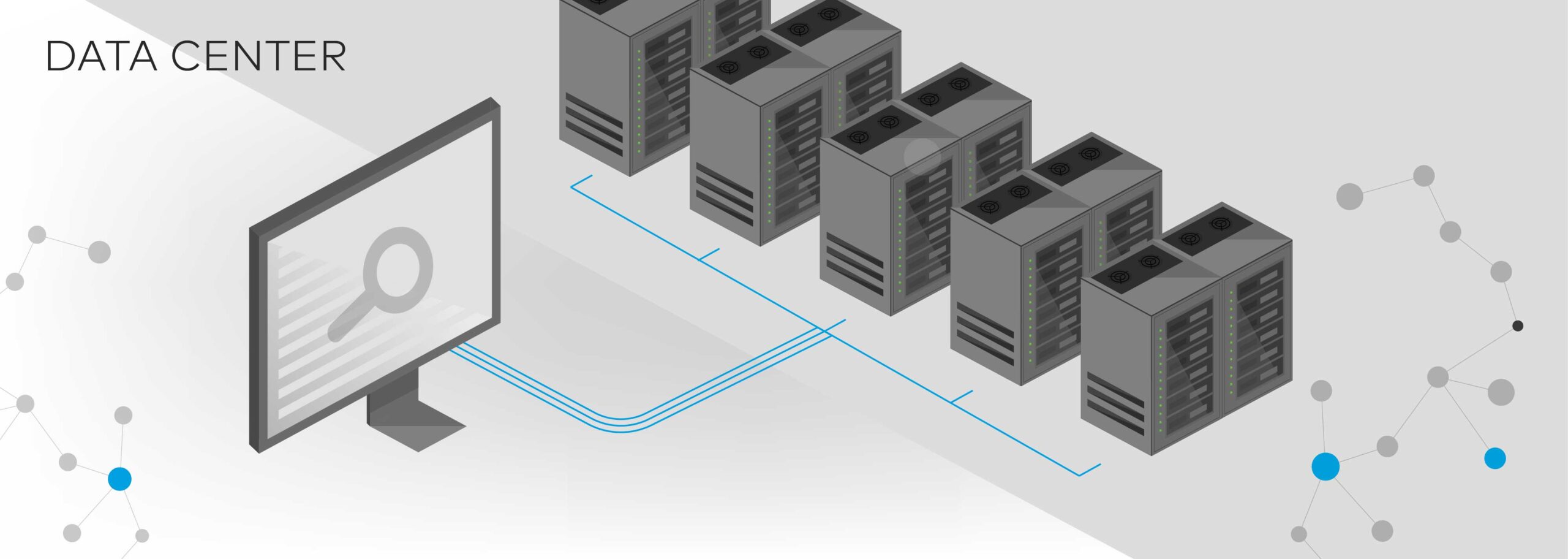
Every organization accumulates and stores substantial amounts of data on a daily basis which increases demand for databases, data archiving and security. What this often means for organizations is that as they grow and develop, their IT infrastructure has to follow suit. It is important to have reliable, functional storage systems for archived audio/video/alternative types of data which also provide a geo-replication feature. This, in turn, requires taking additional security and control measures. A modern server infrastructure offers a solution for the above-mentioned issues and enables uninterrupted, secure data access.
The Data Processing Center’s infrastructure is equipped with fire suppression, air conditioning and structured cabling systems, as well as a Telecommunication Grounding System which meets the appropriate international standards and the supplier requirements. The Central Monitoring System ensures data center security and smooth operation with no delay. The appropriate conditions which have to be maintained within the Data Processing Center include suitable temperature conditions, an uninterrupted power supply and the specially assigned installation standards. All of these factors help reduce risks associated with IT system performance.
Servers and storages – HPE, Dell, Supermicro
Data Storage System consists of servers, data storage hardware (disk arrays and tape libraries), an overarching, inter-connected infrastructure, data backup and data archiving systems, data storage management software and management system. It is vital that all hardware be highly reliable and installed by the appropriately-qualified, experienced engineers.
Virtualization – Vmware
Virtual Dedicated Server is used for large-scale projects with non-standard task execution. The system’s advantage is its customer-oriented approach and the flexibility it offers in regards to customer needs. This technology allows for segmentation of one physically large server’s resources into isolated containers – virtual servers, with a possibility of each one being allocated a relevant resource on demand. Segmentation enables virtual servers to operate independently and have self-sufficient file and operating systems, RAM, hardware and interfaces. Virtualization facilitates the data backup/duplication process.
Management-wise, the virtual server is hardly dissimilar from its physical counterpart. Users can run or pause any service on their server, make an error, upgrade software – all this without affecting performance of other virtual servers on the same physical server. Storage, processing time (CPU) and disk space are purposefully limited as to prevent the virtual server from working to the fullest capacity and halting the performance of other virtual servers.
Hyperconvergence (HCI)
Hyperconvergence entails merging several different components with maximum integration; in particular, it combines storage, computation and network into a single system. The IT solution package, which contains multiple infrastructure components, allows to carry out the most complex tasks in the least amount of time. HCI is designed to facilitate management of the Data Processing Center. Instead of transforming software and transactions into transportation systems, it handles applications and host servers using a single platform. Although volume computation, file storage and networking take place simultaneously, they are administered individually as utility software. Workloads are considered as users whose needs ought to be met even when hardware removal or turning off is required.
